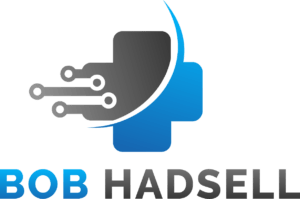
Positive Patient Identification
Positive Patient Identification helps avoid patient misidentification and prevents medical errors. These errors have cost the hospitals a great amount of money. The penalties for misidentified patients lead to wrong medical treatment, testing, transfusion, failure to treat serious illnesses, etc. It makes Positive Patient Identification (PPID) important for identifying the right patient and administering the treatment for a particular illness only. It encourages value-based care, improves the hospital’s financial situation, removes any chances of duplication, etc.
Methods For Positive Patient Identification
- Barcode: PPID comes with an ID band and the barcode. The handheld computer reads the barcode on the patient’s hand and the medication label. It helps confirm that the correct dose and medication are being administered to the patients. UPMC Children’s Hospital of Pittsburgh uses barcode technology.
- Wristbands: The healthcare boards encourage using patients’ wristbands. These are of medical grade and come in different colors. You can find identifiers written like name, identification number, date of birth, phone number, address, social security number, and photo.
- Staff Training: You must train nursing staff to handle the new technology used in PPID and identify patients using ID technologies. The nursing staff is trained under the MSN (Master of Science in Nursing Program) on different technologies.
- Unique Patient Identifiers: It includes the alphanumeric code provided to a particular patient under a unique identification system. UPI system helps track down patients and their medical records quickly to avoid the time-consuming paper process.
New Technology Used for Positive Patient Identification
- Biometrics: Common types of biometrics used to identify patients includes facial, iris, fingerprints, voice, finger vein, or palm patterns. This method helps in patient identification without any hassle and passwords.
- RFID: Human-readable text is used while identifying the patients. The combination of barcodes helps caregivers render the right treatment to the patients. RFID supports positive patient tracking.
- Use of Hybrid Model: The in-person and telehealth model are brought together under the hybrid model. The doctors can remotely handle the problems of particular patients through a patient monitoring system, video conferencing, scheduling appointments, and a follow-up. Healthcare facilities can reach isolated locations, proving cost-effective for both patients and medical clinics.

Maintaining Positive Patient Identification with these Strategies
- Listen to the questions posed by the patient’s family. It may avert a blunder or even a small medical error too.
- A Two-form identification process can recognize the patient and his treatment. Along with a unique identifier, the staff can use the RFID or Barcodes.
- To avoid any duplicity in the medical records, staff must analyze the technology and methods they are using. It will avert any error, and hospitals will not end up bearing the unnecessary medical error cost.
- Ask ‘yes’ or ‘no’ questions to the patients verbally when catering to them. This strategy works in all situations, as the patient knows a lot about them. In emergency cases, their family members must be questioned.
- To avoid any medical errors, you can also put up a patient’s photo on the unique identifier system.
Conclusion
Positive Patient Identification helps the patients and healthcare sector to make a positive influence. It helps patients receive the right and specialized medical treatment without any hassle. The hospitals will not have to bear any error costs or spend time handling legal problems.
